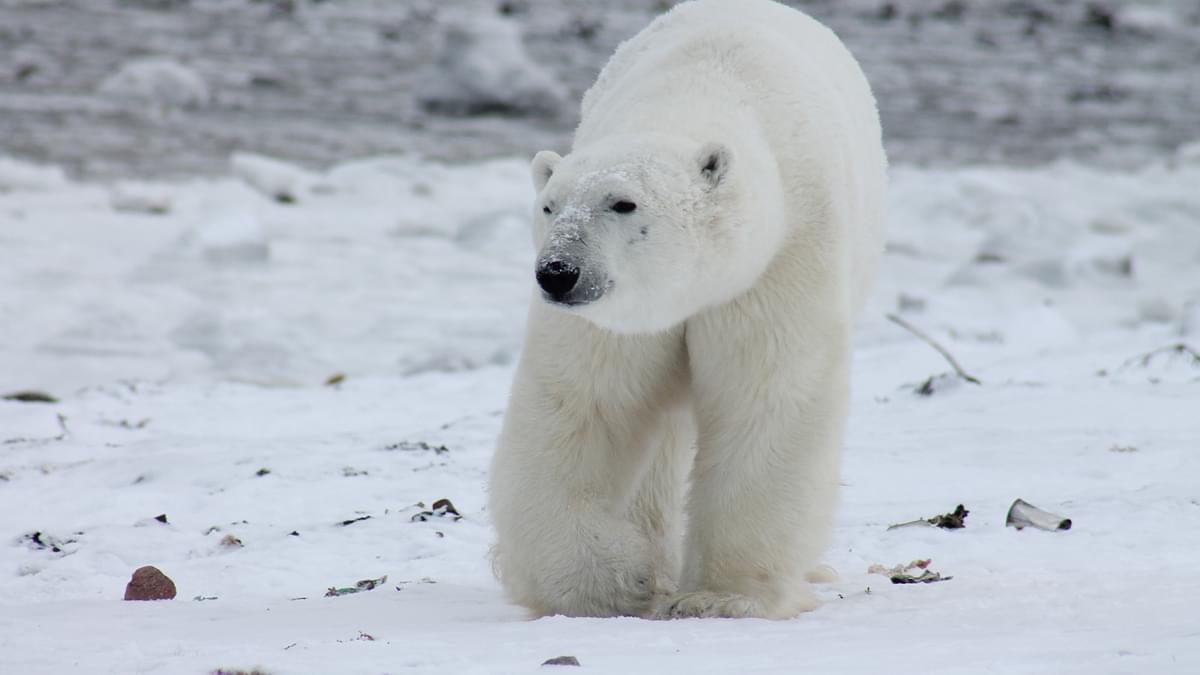
Arctic food web
This food web activity introduces young people to a range of organisms that they may come across during an Arctic expedition. Students will be asked to identify, classify and group organisms to build an Arctic food web mobile.
Preparation
Jamie will be demonstrating this activity live, and will have the animal 'cards' already cut out. If you wish to follow live, students can colour in the different Arctic organisms in advance; and cut them out stick them to the front of a piece of cardboard with the description card stuck to the back. Do not complete the description yet.
Session outline
1. Introduction (5 mins)
Jamie will open the session with a welcome and brief introduction to the expedition and any shout-outs to registered classes.
In this activity students will create a series of food chains connecting different creatures that live in the Arctic. This will show how life in the frozen north is connected.
2. Subject knowledge (10 mins)
Jamie will then introduce some of the types of life that can be found in the Arctic and discuss how they are related through predator-prey relationships. During this time, you can distribute the resources to students including: students' coloured-in Arctic life cards, 3 pieces of 20 cm length dowelling, twigs or wooden skewer (with pointed ends removed), 2 m of string or yarn and paper glue.
3. Activity time (15 mins)
Jamie will begin assembling the different food chains found in the Arctic and subsequently the food web mobile, students follow along in real-time.
If the whole mobile is too complicated an idea to start with, consider making a single food chain first. Start by placing a ‘producer’ on a table. Search through all the other cards to find a consumer that eats that producer. You might have started with algae and then found the copepod that eats the algae. See if you can make the chain longer by finding an animal that eats copepods, and so on. For further development of students’ knowledge and understand there a couple of resources that can be used to conduct research; an interactive image of Arctic life or Arctic life gallery.
At this point, you can submit your students’ questions via the live chat.
4. Q&A and conclusion (15 mins)
After completing the activity Jamie will be able to answer pre-submitted questions and take part in the live chat. At the end of the broadcast, Jamie will suggest some other activities you might like to try and what's coming up in the rest of Arctic Live 2019.
Speakers

Jamie Buchanan-Dunlop
Executive Director, Encounter Edu
Brought to you by



With the support of




Arctic food web
This food web activity introduces young people to a range of organisms that they may come across during an Arctic expedition. Students will be asked to identify, classify and group organisms to build an Arctic food web mobile.
Preparation
Jamie will be demonstrating this activity live, and will have the animal 'cards' already cut out. If you wish to follow live, students can colour in the different Arctic organisms in advance; and cut them out stick them to the front of a piece of cardboard with the description card stuck to the back. Do not complete the description yet.
Session outline
1. Introduction (5 mins)
Jamie will open the session with a welcome and brief introduction to the expedition and any shout-outs to registered classes.
In this activity students will create a series of food chains connecting different creatures that live in the Arctic. This will show how life in the frozen north is connected.
2. Subject knowledge (10 mins)
Jamie will then introduce some of the types of life that can be found in the Arctic and discuss how they are related through predator-prey relationships. During this time, you can distribute the resources to students including: students' coloured-in Arctic life cards, 3 pieces of 20 cm length dowelling, twigs or wooden skewer (with pointed ends removed), 2 m of string or yarn and paper glue.
3. Activity time (15 mins)
Jamie will begin assembling the different food chains found in the Arctic and subsequently the food web mobile, students follow along in real-time.
If the whole mobile is too complicated an idea to start with, consider making a single food chain first. Start by placing a ‘producer’ on a table. Search through all the other cards to find a consumer that eats that producer. You might have started with algae and then found the copepod that eats the algae. See if you can make the chain longer by finding an animal that eats copepods, and so on. For further development of students’ knowledge and understand there a couple of resources that can be used to conduct research; an interactive image of Arctic life or Arctic life gallery.
At this point, you can submit your students’ questions via the live chat.
4. Q&A and conclusion (15 mins)
After completing the activity Jamie will be able to answer pre-submitted questions and take part in the live chat. At the end of the broadcast, Jamie will suggest some other activities you might like to try and what's coming up in the rest of Arctic Live 2019.
Speakers

Jamie Buchanan-Dunlop
Executive Director, Encounter Edu
Brought to you by



With the support of





